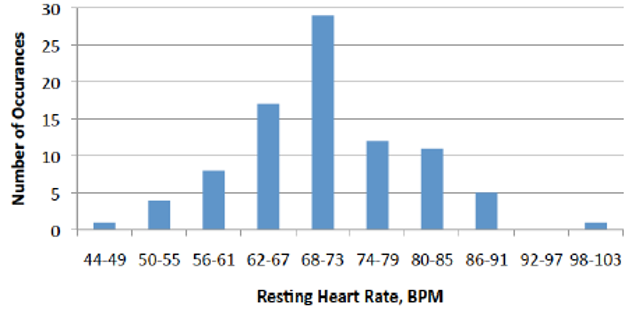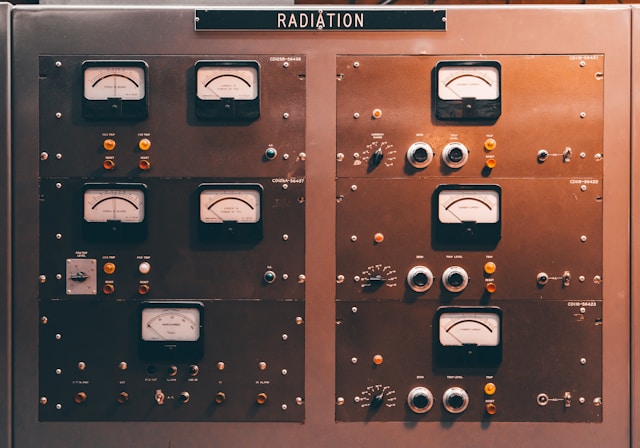How to Write an Excellent Lab Report
Purpose
Even in the age of computer animation, short-form video, etc. written reports remain one of the most important tools for communicating information effectively. This is why businesses and research rely on them or related formats (like scientific articles). Reports allow you to include all the information that a reader needs in one convenient place.
The written format that includes figures and tables allows the reader to quickly find what they need and then digest the information in more depth. This is why having a consistent and logical structure is key for an excellent lab report.
Increasingly, tools like jupyter notebooks, R-markdown, or Quarto (the tool used to create this lab manual) to include data analysis and figure generation directly into the report, which ensures that reports can be frequently updated and data analysis is transparent.
Learning Goals
After reading this page, you should
- know the components and structure of the lab report.
- be able to compose lab reports for the ISAT 300 labs.
- know the grading requirements for your group’s lab reports.
Lab Report Structure
The below section is based on the Writing Lab Reports 1 guide by Indiana University Bloomington Libraries.]
A complete lab report contains the following components:
Cover Page with Title
- The title of the lab report should be descriptive of the experiment and reflect what the experiment analyzed.
- Ex: “Determining the Free Chlorine Content of Pool Water”
Abstract
- Abstracts are a summary of the experiment as a whole and should familiarize the reader with the purpose of the research.
- Abstracts will always be written last, even though they are the first paragraph of a lab report.
- When writing an abstract, try to answer these questions:
- Why was the research done or experiment conducted?
- What problem is being addressed?
- What methods were used?
- What results were found?
- What are the meaning of the results?
- How is the problem better understood now than before, if at all?
Introduction
- The introduction of a lab report discusses the problem being studied and other theory that is relevant to understanding the findings.
- Include and explain the concepts from the lecture that are applied in the lab
- Include and explain relevant equations
- Provide background on the topic of the lab and include real-world examples (if possible)
- The hypothesis of the experiment and the motivation for the research are stated in this section.
- Write the introduction in your own words. Try not to copy from a lab manual or other guidelines. Instead, show comprehension of the experiment by briefly explaining the problem.
Methods
The methods and materials section provides an overview of any equipment, apparatus, or other substances used in the experiment, as well as the steps taken during the experiment. If using any specific amounts of materials, make sure the amount is listed.
Write this as a paragraph. Do not include a list of materials.
Example:
We used a pipette to add an aqueous solution containing 1.13mg of Na and 0.67mg Ag per 200 mL of water to graduated cylinder containing …
List the steps taken as they actually happened during the experiment, not as they were supposed to happen.
Explain how your experimental data was analyzed and include relevant equations
If written correctly, another researcher should be able to duplicate the experiment and get the same or very similar results.
Results
The results show the data that was collected or found during the experiment.
Include the data collected and any statistics that are calculated.
Your results must include information about uncertainty
Explain in full sentences/ paragraphs the data that was collected. Reference any graphs and tables within the text (see example below)
Use graphs, charts, or other figures to show your results.
- Tables should be labeled numerically, as “Table 1”, “Table 2”, etc. and have a Table header inserted above the table.
- Other figures should be labeled numerically as “Figure 1”, “Figure 2”, etc. and should have a descriptive figure caption below the figure.
- Figures formatting should be clear and include labels for x and y axes as well figure legend if more than one type of data is being presented:
Calculations to understand the data can also be presented in the results.
Example for referencing figures and tables within the results section:
Class results from the heart rate lab show that measured resting heat rates ranged between 44 and 103 beats per minute (bpm)with most resting heart rates in the order of 68-73 bpm (Figure 1). The variation of heat rates between individuals was generally larger than the variation in repeated heart rate measurements for the same person (Table 1). <… More description>

Figure 1: Distribution of measured resting heart rates in beats per minute (BPM) collected in Fall 2022
Table 1: Resting heart rates measured in beats per minute (BPM) for individual subjects collected in Fall 2022 with three repetitions and calculated average resting heart rate
Test subject identifier Resting Heart Rate, 1st sample (bpm) Resting Heart Rate, 2nd sample (bpm) Resting Heart Rate, 3rd sample (bpm) Average Resting Heart Rate (bpm) 001 67 75 70 71 … … … … … xxx 70 74 81 75 If your the lab contains more than one experiment, make sure to present results in a consistent order.
Discussion
- The discussion section is one of the most important parts of the lab report. It analyzes the results of the experiment and is a discussion of the data.
- This section must be written after the results section!
- Make sure to discuss the results of your experiments and refer to the specific results. Avoid general statements that could be written without having conducted the experiment.
- If any results are unexpected, explain why they are unexpected and how they did or did not effect the data obtained.
- Analyze the strengths and weaknesses of the design of the experiment and compare your results to other similar experiments.
- If there are any experimental errors, analyze them.
- Explain your results and discuss them using relevant terms and theories.
- When writing a discussion, try to answer these questions:
- What do the results indicate?
- What is the significance of the results?
- Are there any gaps in knowledge?
- Are there any new questions that have been raised?
Conclusion
- The conclusion is a summation of the experiment. It should clearly and concisely state what was learned and its importance.
- Talk about what the results and discussion revealed about the processes and the system you are investigating.
- Do not talk about the technical skills you learned.
- If there is future work that needs to be done, it can be explained in the conclusion.
References
- If using any outside sources to support a claim or explain background information, those sources must be cited in the references section of the lab report.
- Use a numeric citation format such as the IEEE Numeric Style.
- In this style 2 citations are numbered in the order of appearance. Each citation should be enclosed in square brackets. Once a source has been cited the same number is re-used for all subsequent citations.
- A reference (see end of this document) list at the end of the document lists the full details of the sources, including the data accessed for websites.
- It is always a good idea to cite the lab manual 3 and the textbook 4
Incorporation of past feedback
A 15% portion of your lab report, will be assigned based on incorporation of feedback from the previous labs. To get these points you must:
- Incorporate feedback from the last report into your work. Do not repeat the same errors!
- Provide a brief paragraph on how you used the feedback to improve your lab report and what specifically was done differently in response to past feedback.
Rubric
Lab reports will be graded using a rubric.
Footnotes
Indiana University Bloomington Libraries, How to Write a Lab Report[Online]. Available: https://guides.libraries.indiana.edu/c.php?g=992698&p=7182656, Accessed online: 2025-01-21↩︎
Bath University Library, IEEE Referencing Style Sheet [Online]. Available: https://www.bath.ac.uk/publications/library-guides-to-citing-referencing/attachments/ieee-style-guide.pdf, Accessed online: 2025-01-21↩︎
ISAT 300 Faculty, Title of Lab [Online]. Available: Canvas URL, Accessed online: Date ↩︎
Illowsky B., Dean S., Introductory Statistics, 2022 ed, Houston: OpenStax (2022)↩︎
